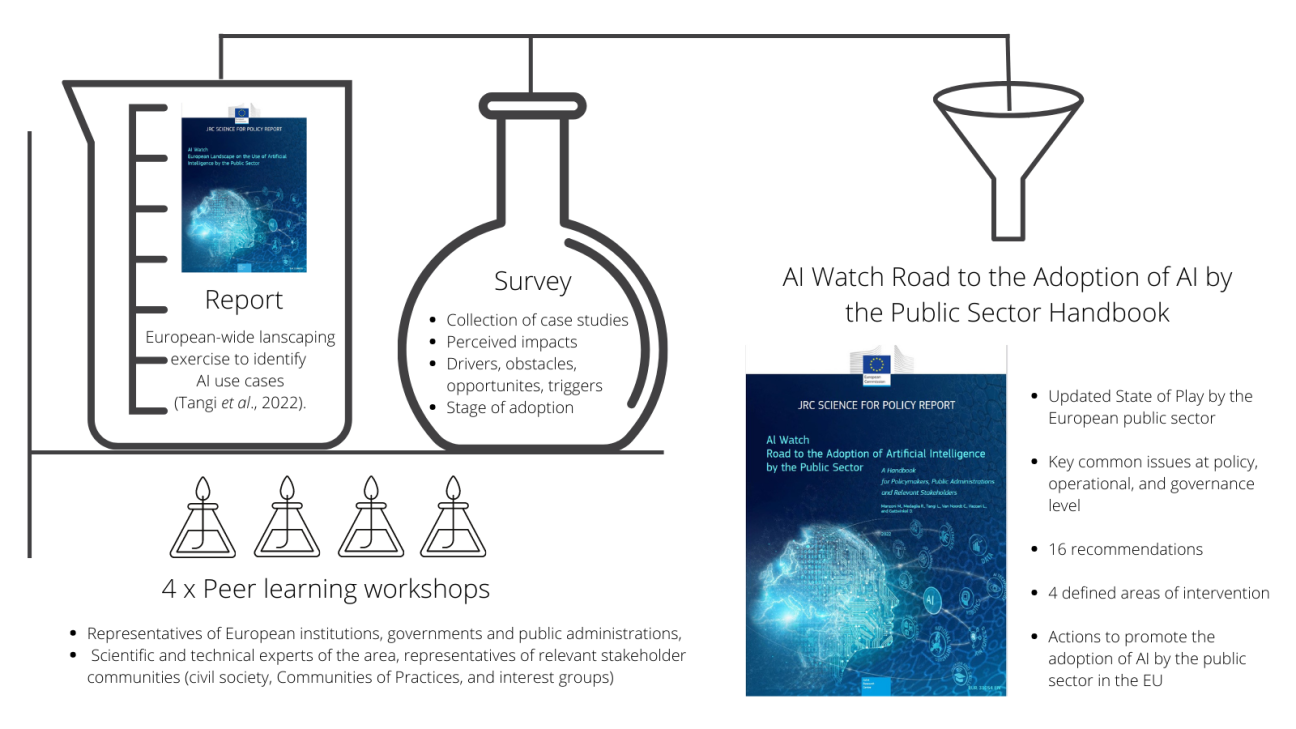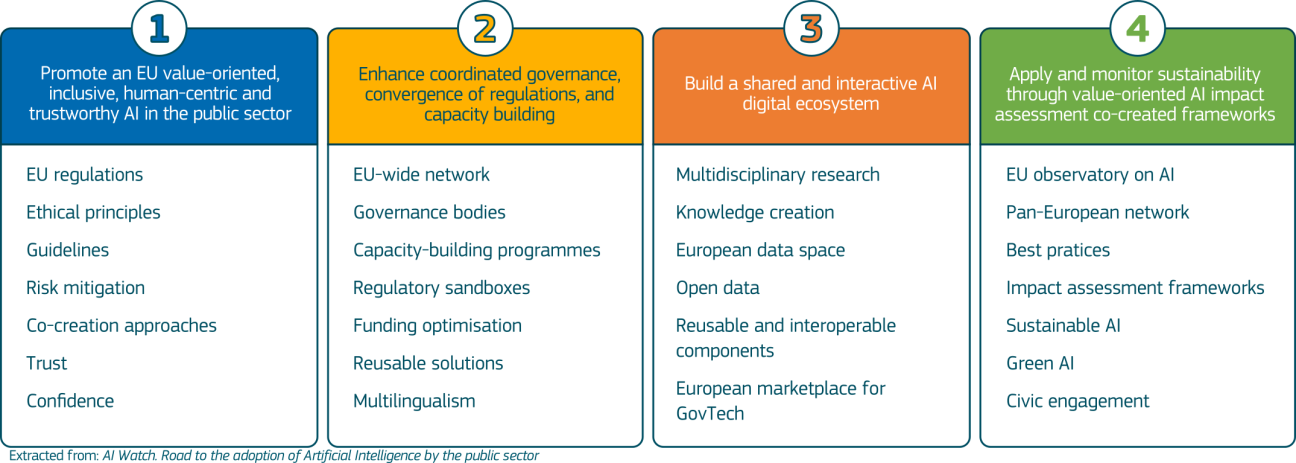[Return to ELISE's Artificial Intelligence in the public sector page]
This handbook has been developed within the context of the Artificial Intelligence (AI) Watch, the European Commission’s knowledge service to monitor the development, uptake, and impact of AI in Europe.
As part of the AI Watch initiative, a specific task addresses the role of AI in the public sector, which sets out to provide actionable guidelines to promote the adoption of safe, lawful, inclusive, and trustworthy AI by public sector administrations in the EU.
This report, built on a two-year state-of-the-art analysis of public sector approaches, is the first endeavor at the European level to outline possible avenues to promote AI in support of public services. It aims to provide the reader with a better understanding of the main features, needs, and opportunities of AI in the public sector, and to deliver a set of possible actions to be carried out at the European, national and local levels. The handbook prioritizes areas of intervention to support the joint commitment by the European Commission, the Member States, and Associated Countries outlined in the Reviewed Coordinated Plan on Artificial Intelligence 2021 (updating the agreements undertaken between the Commission and Member States established during the 2018 Coordinated Plan11).
The public sector mandate is the protection and sound management of citizens and the public good, and it is administered by the rule of law. Based on these two fundamental principles, public sector administrations differ from private organisations in several characteristics underpinning their values, determining their objectives, instruments, roles, and relationships with other actors. The conditions of adoption and use of AI technology in the public sector, cannot be modeled around those of private enterprises. The European Union aims to become a strategic leader in high-impact sectors where Artificial Intelligence (AI) can boost the European socio-economic ecosystem and help to improve the living conditions of European citizens.
This handbook provides recommendations to policymakers and relevant stakeholders on the sensible adoption and use of AI in and by the public sector in Europe. The outlined recommendations and actions aim to support forward-looking managers, practitioners, and innovators throughout the public services delivery chain at European, national, and local government levels.

A section of the handbook is dedicated to mapping the potential benefits of AI adoption in the public sector, its risks, and barriers to its adoption and use. The handbook outlines a set of priorities for addressing common conditions for many stakeholders and aligns coordination between EU Member States and the European Commission at different operational levels.
Sixteen recommendations are clustered within four key Areas of Intervention that have been identified as priorities to put forward within AI national strategies:

The handbook highlights specific requirements in terms of recommendations and related actions to address the early stages of the design and development of AI-based solutions in the public sector. It represents the beginning of a journey towards a shared vision and common values to foster a safe, lawful, trustworthy, and sustainable adoption of AI by the European public sector.
How to cite this report: Manzoni, M., Medaglia, R., Tangi, L., Van Noordt, C., Vaccari, L. and Gattwinkel, D., AI Watch. Road to the adoption of Artificial Intelligence by the public sector. Publications Office of the European Union, Luxembourg, 2022, ISBN 978-92-76-52132-7, doi:10.2760/288757, JRC129100.

